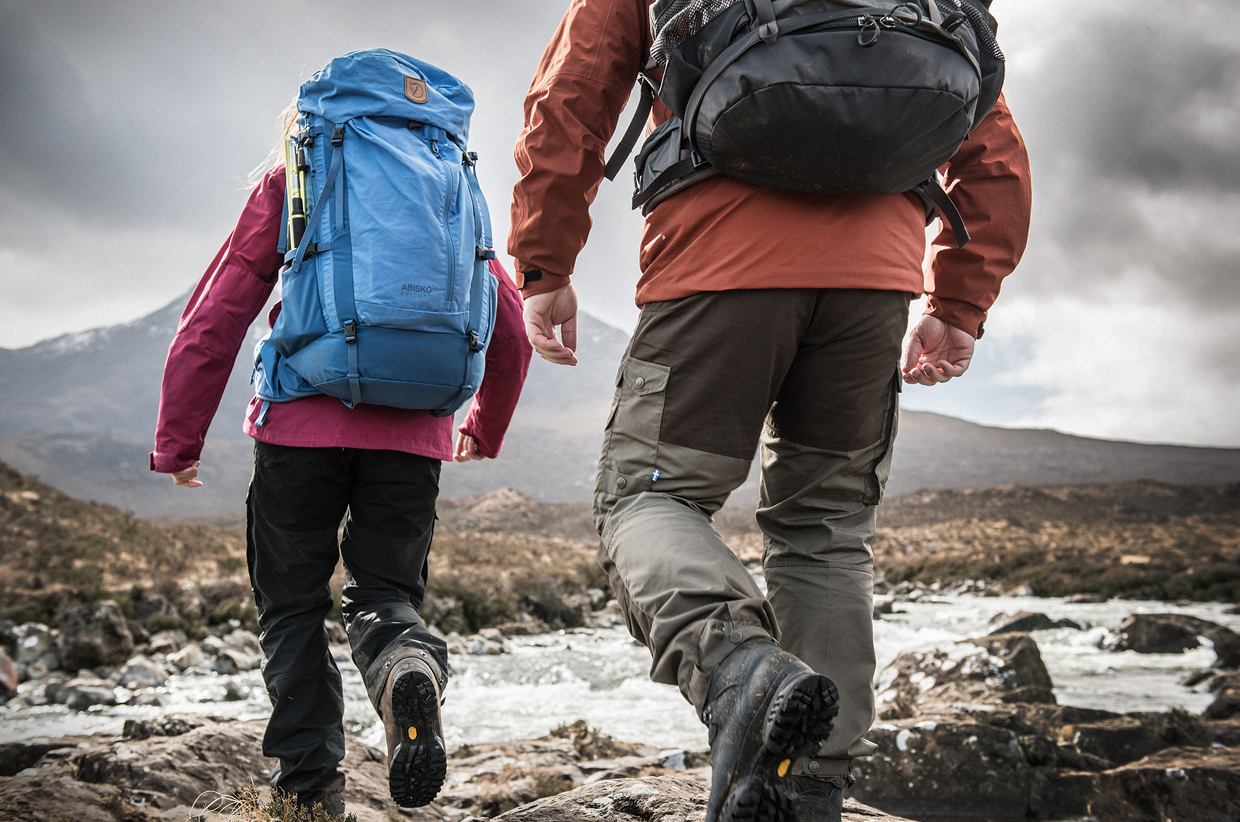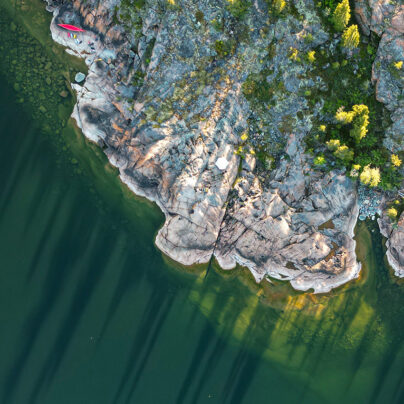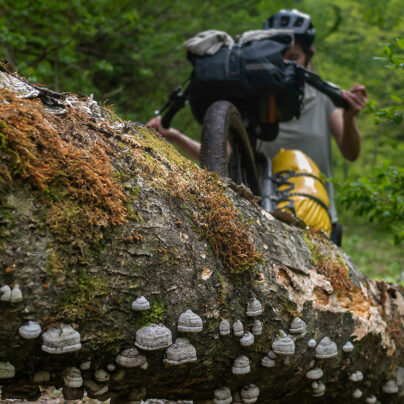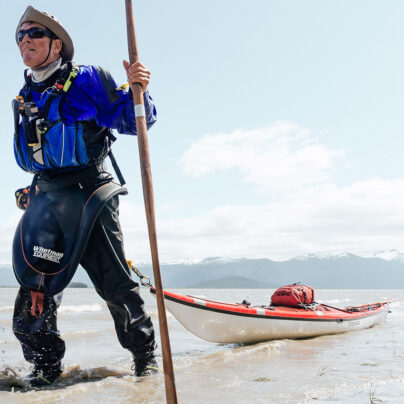Review: Fjällräven’s Kaipak 58
Gear
The journey begins
Written by Daniel Neilson // Photos by Anders Brogaard
The moment is now. When you pick up your backpack is the point where the journey begins. It’s always slightly heavier than you imagine, hauling it up off the floor with one hand. Have I packed too much? Do I have enough water? But once it’s on your back, hip belt clipped in and tightened, chest strap attached, you look at your walking friend, and with a nod of the head step onto the trail. Here the world opens. Once your backpack is on, you’re moving and no longer planning. The journey begins.
After packing down our tent and loading it into the backpack, we gave one last glance around the ground to make sure there were no hiding tent poles, swung everything we had with us on our backs, adjusted straps and stepped onto the path. A day’s walk ahead of us was the Lookout bothy at the northernmost point of Skye. It would be a day of two halves, the second part dominated by cliff-edge walks, boggy terrain and seaward views. The first half passed through what is, for me, the most spectacular landscape in the British Isles.
The names give some indication of the drama that geological pressures have wrought on this land: The Table, The Needle and my favourite, of course, The Prison. These features are all to be found around the Quirang in northern Skye.
The Quiraing is a landslip that falls with intent below Meall na Suiramach, the most northerly summit of the Trotternish Ridge. But at the Quiraing, the landslip is still happening right now. Year after year, the road at the bottom needs to be repaired. This shifting is slow, barely perceptible from a human perspective, but in geological terms it’s the equivalent of an ocean-liner-sized iceberg tumbling from a glacier in seconds. This is a living, breathing landscape.



Over this three-day winter escape to Skye, we brought little with us. I opted for Fjällräven’s Kaipak 58 for several reasons. The 58-litre size is perfect for a weekend camping trip with a tent, camping equipment and plenty of warm and waterproof layers. But it isn’t too big, and is very manageable for long distances.
The first thing to note about the backpack is the material, a blend of fabrics that is unique to Fjällräven. This is G-1000 HeavyDuty Eco; the beefed up version of a polycotton material that Fjällräven uses across most of their garments. It is incredibly durable and can be waxed with the company’s own Greenland Wax to make it more water resistant. This ‘Eco’ version uses recycled polyester and organic cotton.
Having used the Kaipak 58 a fair bit, including at one point watching it tumble over a waterfall (different trip), we can vouch for its durability – this is a backpack that should last a serious amount of time. A double layer of nylon at the bottom keeps it dry.
Another aspect you notice just from looking at it is the lack of straps – a good thing in our opinion. This is a streamlined pack without any unnecessary extras. In fact, its apparent simplicity is something we keep admiring about it.
On the second day we woke to an intense wind, a challenge when packing tents, but we found we could open the lid and load the spacious main compartment without any problems – nothing to snag.
The lid has two pockets, one accessible from the outside (which also includes a rain cover in the visible safety colour of UN Blue) and a security pocket underneath. What we found most useful, however, was the large front pocket: ideal for stashing waterproof jackets. There are also two mesh side pockets, compression straps, and a separate attachment for walking poles or ice axe. There’s another access point at the bottom of the main chamber.
That we like the material and features would mean nothing if it weren’t comfortable – hands down the most critical aspect of a backpack. Fortunately, we found both the male and female version an exquisite fit. Again, it’s a simple system that has aluminium supports and ample padding where needed. The system is completely fixed – minimising the complexity and number of straps – so worth trying on first, but in our experience both versions offer a good fit. The sturdy hip belt with a pocket on each side carries the weight well. The chest strap has a whistle on. Toot. But the best compliment that I could make is that we walked and walked and never really noticed the packs on our backs.


It could of course have been the landscape around us. We just couldn’t get enough of it. We meandered along the trails, taking diversions when we saw something interesting, stopping to stand in awe, and occasionally legging it to get some shelter from the quickly passing showers. We were nevertheless happy to see the isolated shelter of the Lookout bothy, standing on the cliff edge at the end of our day’s walk. Our packs were now looking well used. We threw them down on the bothy floor along with those of our new friends and unpacked the stove. We’d picked up some scallops and our tummies were growling.
The evening sky cleared and the views expanded. We spent the hours before darkness exploring the area, admiring the view, taking photographs and relaxing. If the ritual of swinging on your backpack marks the very start of a journey, taking it off rarely marks the end. Instead, backpacks gather the dust and grime, the luggage tags and souvenirs of travel over time. I’ve known people get quite sentimental over a favourite backpack (by people, I mean me). They don’t just load our belongings, but also our memories. I’ve begun to view mine like a wok, improving with age and carrying some of the detritus of past journeys. Either that or maybe I’m just lazy about cleaning it.
Produced on location in the Isle of Skye. For more on the story from our trip, visit Beyond here on Sidetracked. For more information on Fjällräven, visit fjallraven.co.uk or follow them on Instagram @fjallravenofficial.
Written by Daniel Neilson // Photography by Anders Brogaard


